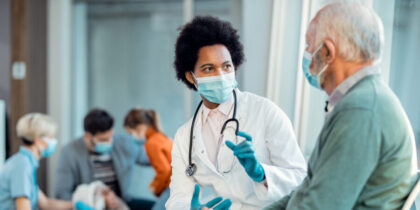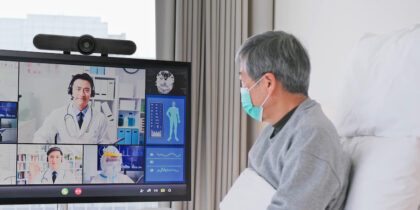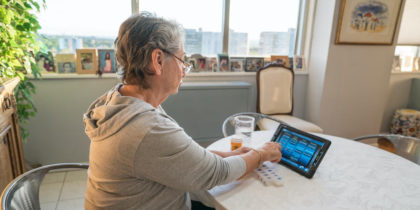Every year about 735,000 Americans suffer a heart attack. The major risk factors that contribute to these cardiac events include physical inactivity, obesity, uncontrolled high blood pressure, high LDL cholesterol and smoking. Cardiac rehabilitation through lifestyle modification is well-studied and proven to have positive outcomes on reducing future heart attacks and hospitalizations.
Cardiac rehab includes exercise, counseling, health education and behavioral and lifestyle risk reduction techniques. There are two types of traditional cardiac rehabilitation programs: paper-based, in-home rehab, where patients use paper and pen to track exercise regimens; and in-person, site-based cardiac rehab. These programs are successful in controlled environments, but present hurdles for patients including time commitments and inconveniences like multiple doctor’s office visits, lost work time and difficulty adopting radical behavioral changes. Both types of cardiac rehab result in completion rates of about 50 percent.
A New Cardiac Rehabilitation Solution to Better Fit Patient Lives
In a recent case study published in the NEJM Catalyst, researchers from Kaiser Permanente reported on a cardiac rehabilitation solution created to fit better into patients’ lives. The organization created a tech-enabled, evidence-based rehab program to improve clinical outcomes and expand patient access. The solution consists of patient-facing applications developed collaboratively with Samsung. The mobile apps can be downloaded to a smartphone and linked to wearables configured specifically for this solution.
How Mobile Solutions Improve Patient Experience
Get your free guide to enhancing the patient experience with mobile technology. Download Now
Patients eligible for the solution have an initial face-to-face appointment to establish a bond between the patient and care team. For the duration of the program, a case manager conducts weekly phone calls to further that bond.
Once enrolled, the members in the program schedule an on-site evaluation where they undergo a six-minute walk, download the mobile app and receive the wearable. The wearable allows selection of preferred exercise regime, self-assessment and rating of perceived exertion, and self-assessment of symptoms. Data from the wearable transmits to a clinician dashboard, which clinicians use to set exercise goals and monitor adherence, compliance and overall progress with the program. The members receive educational materials and are referred for additional education classes based on any additional health issues they have.
Members schedule weekly virtual visits with a case manager in conjunction with the physician, as well as depression screening, behavioral coaching and support. The case manager helps members navigate the 36-session, eight-week program. In feedback, patients note the importance of this bond between patient and provider. The accountability provided by the provider and technology has a profound impact.
After graduation, wellness coaching is offered for another eight to 12 weeks to assist members in their journey towards lifestyle change.
Impressive Results and Lessons Learned
Today, Kaiser Permanente reports, virtual cardiac rehabilitation is available in 12 of its 13 Southern California medical centers. As of June 2019, the program had enrolled 2,362 patients and graduated 1,880 patients. The program completion rate is 87 percent, with an average of 67 percent of patients exercising daily. Compared to site-based cardiac rehab, completion rates have improved by 74 percent. Total referrals to cardiac rehab programs have increased 45 percent since the launch. Kaiser Permanente anticipates expanding the home-based program to more patients this year. Rehospitalization rates for cardiac-related issues is under 2 percent, compared to the national average readmission rate of 10 to 15 percent.
Program leaders defined the essential takeaways from the solution’s success.
- Build a strong virtual relationship between the care team (case manager, primary care doctor, cardiologist) and the patient
- Use patient-centric design to ensure technology is simple to use and easily integrates into patients’ lives
- Offer local wraparound services specific to the patient and a 24/7 care network
- Create a symbiosis between innovation and operational teams so the latter are consulted during the problem definition phase and keep the innovation team involved during the transition to operations
Watch a webinar on improving communication and collaboration in healthcare using mobile technology, or download a brief on how displays are easing pain points and transforming clinician and patient experiences.








